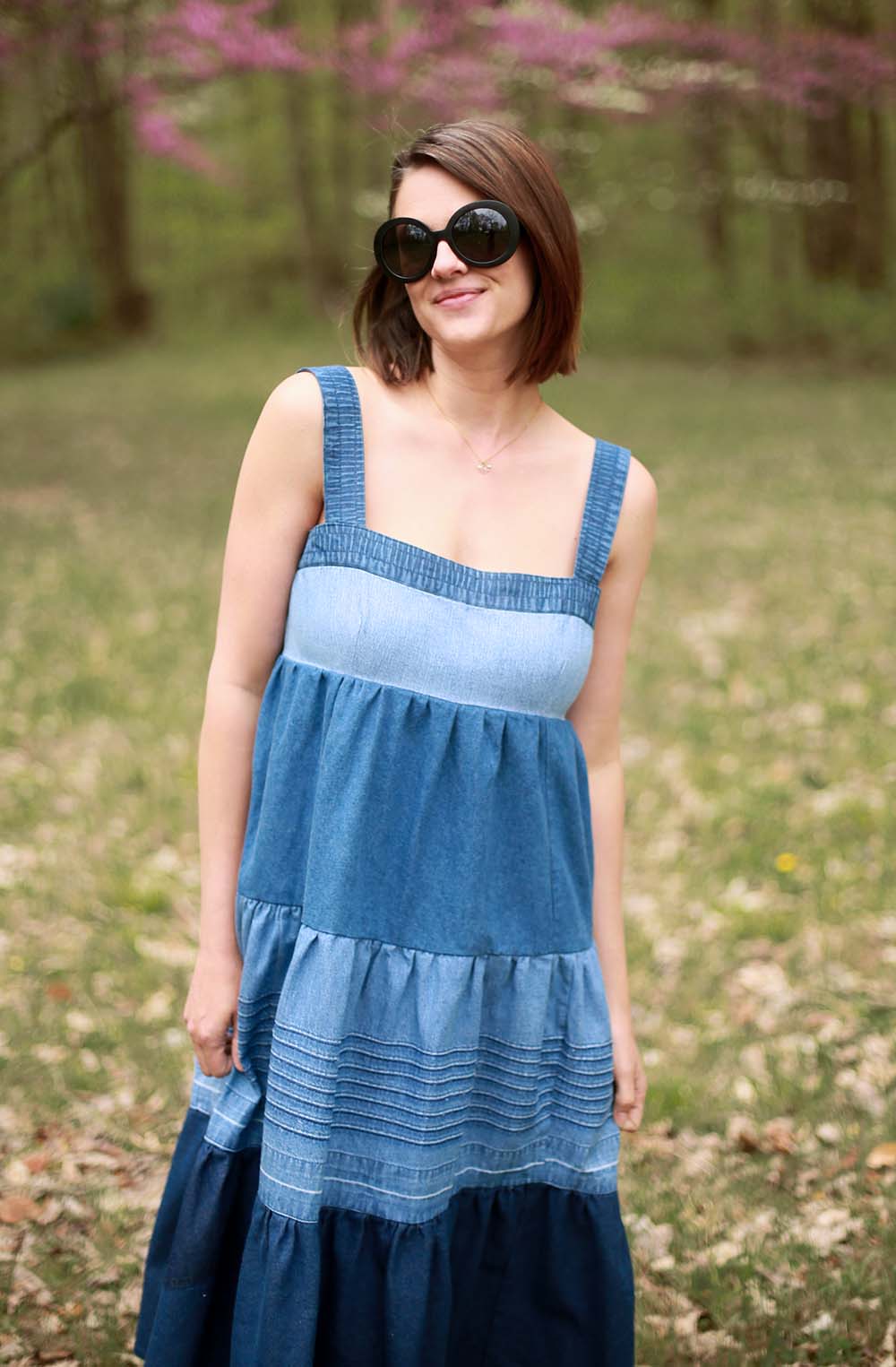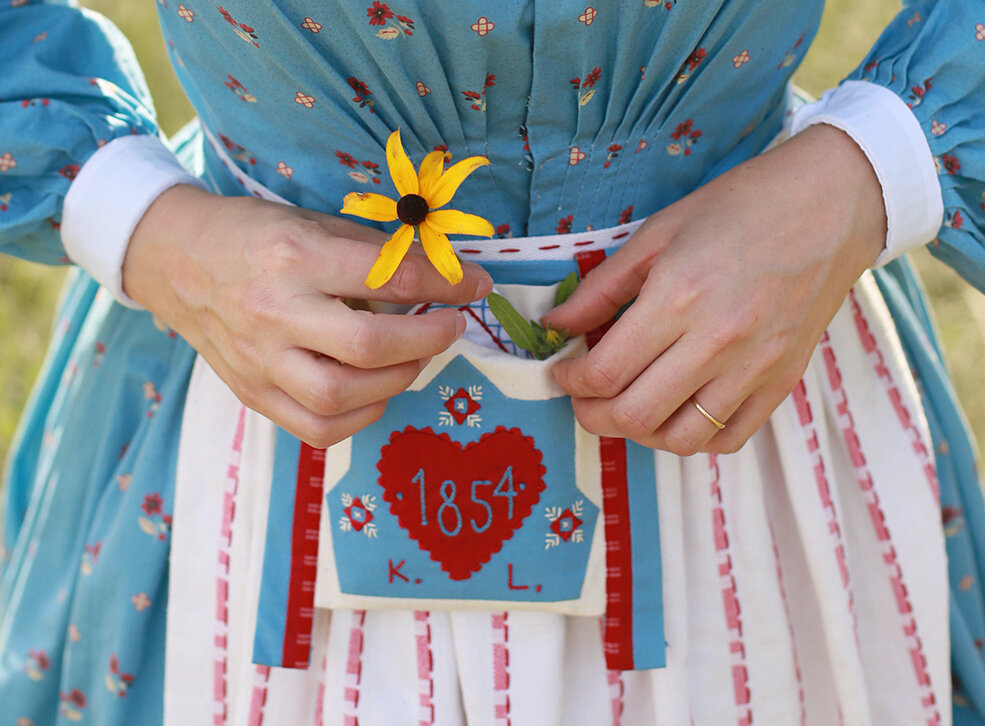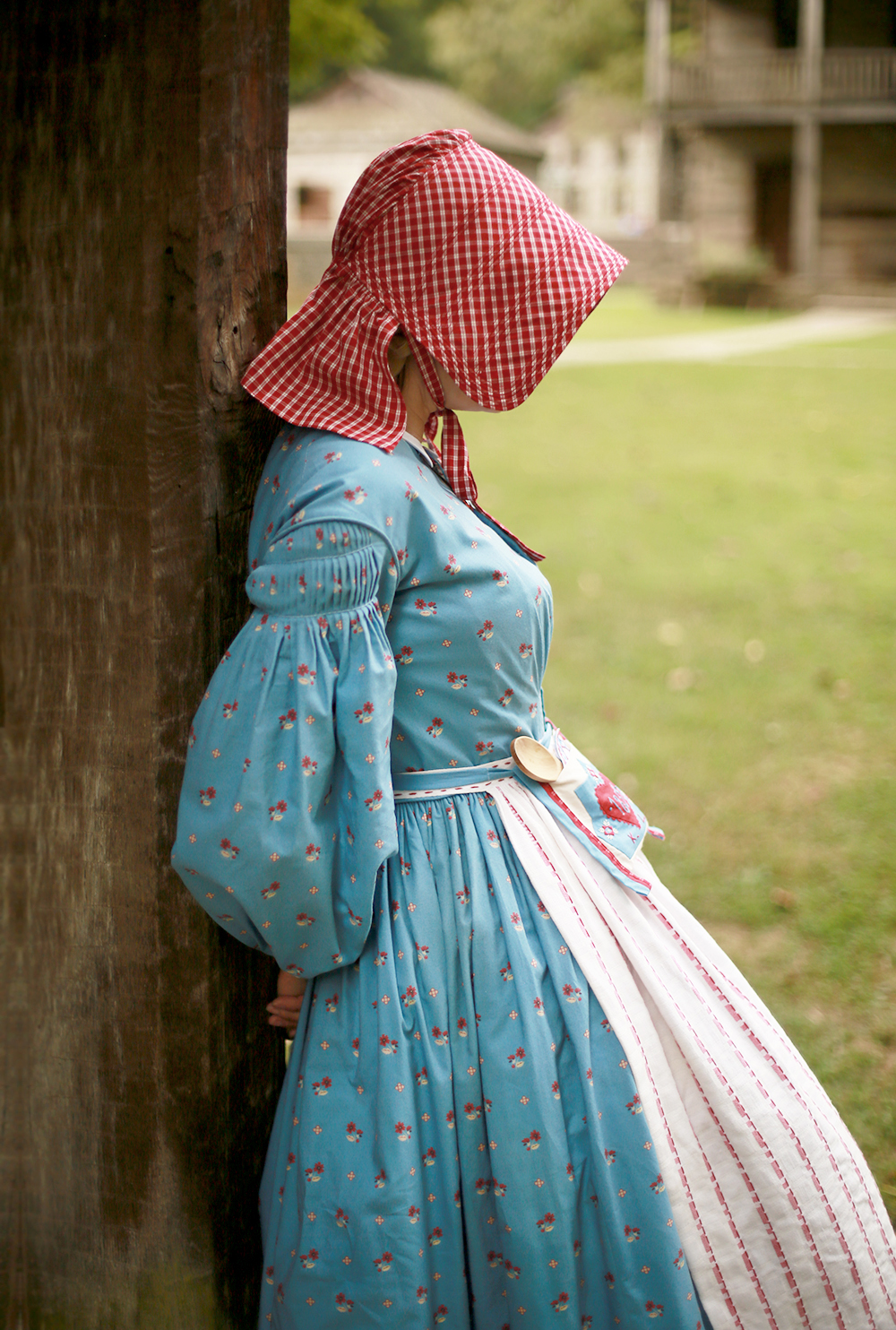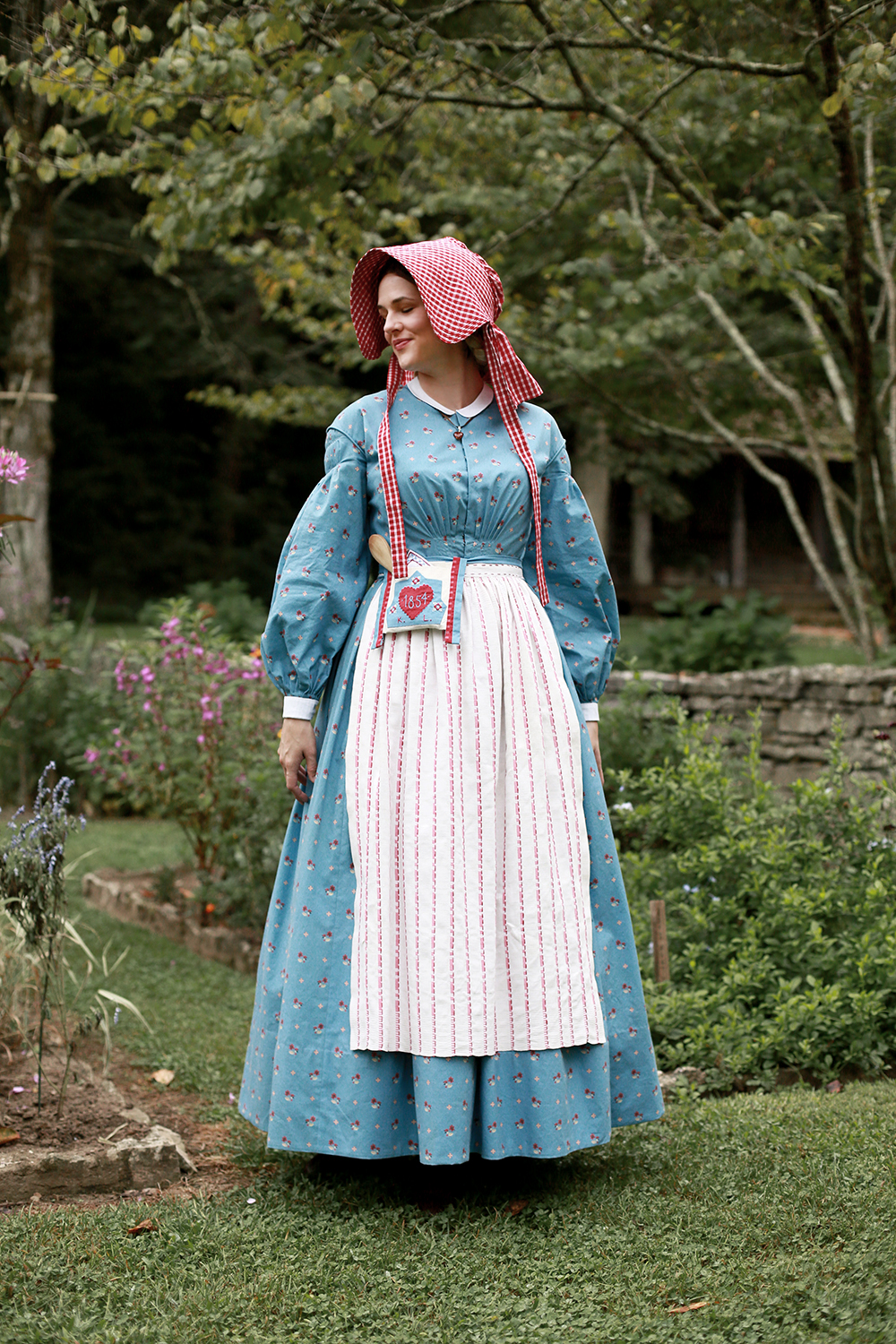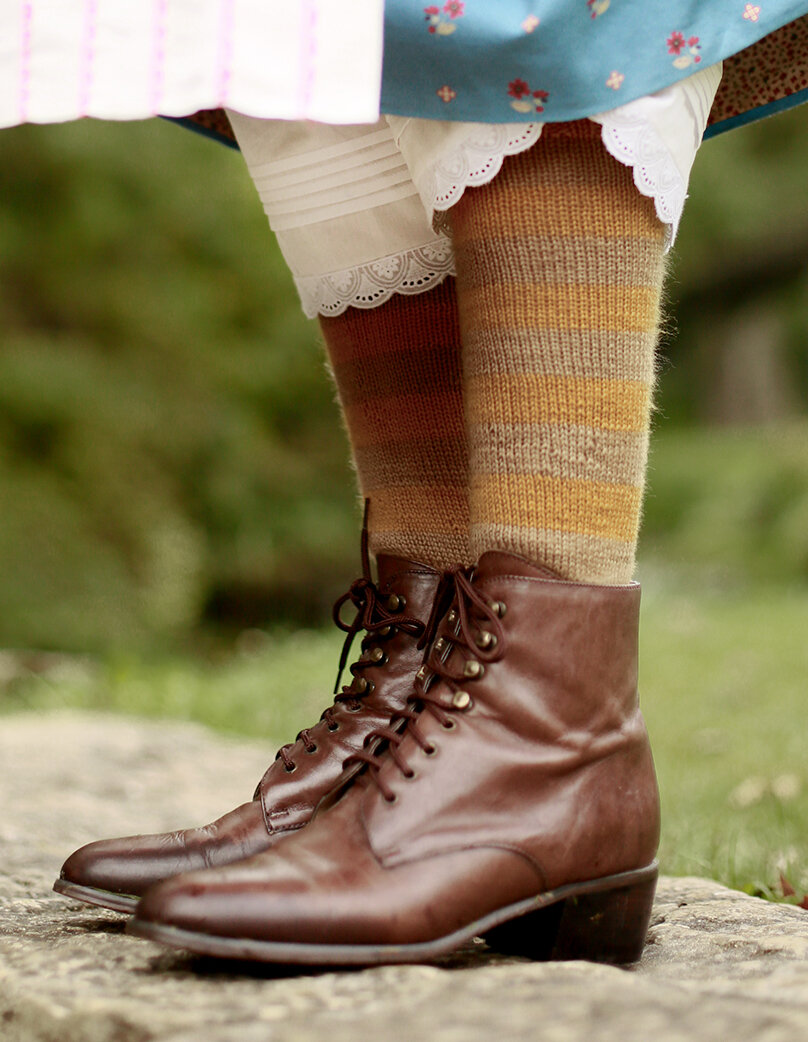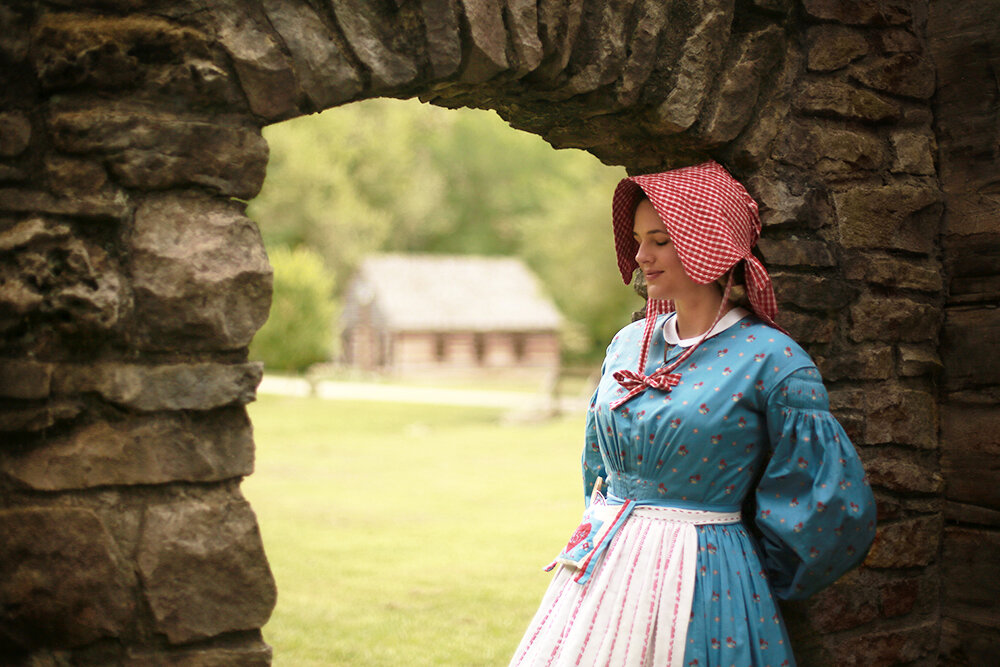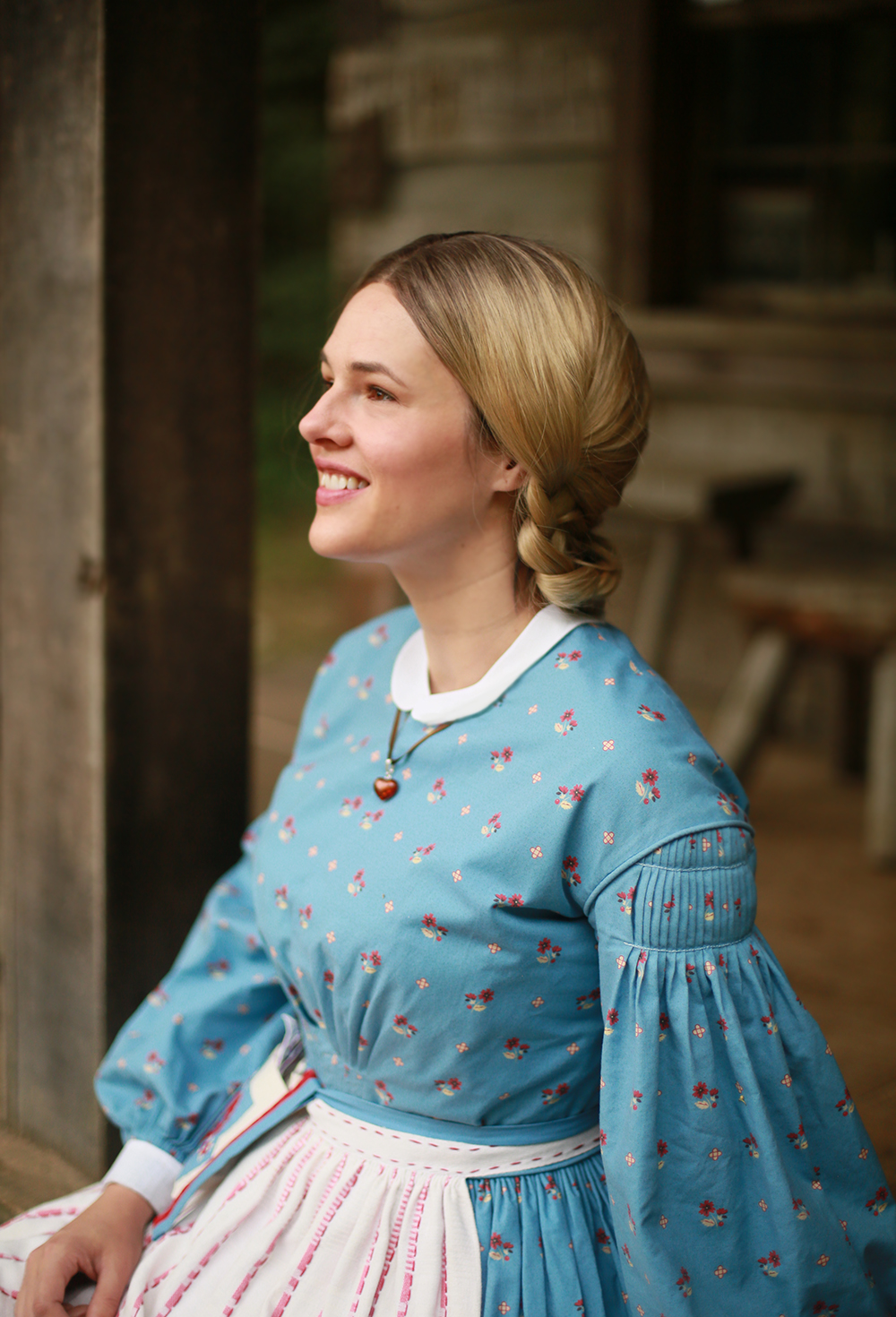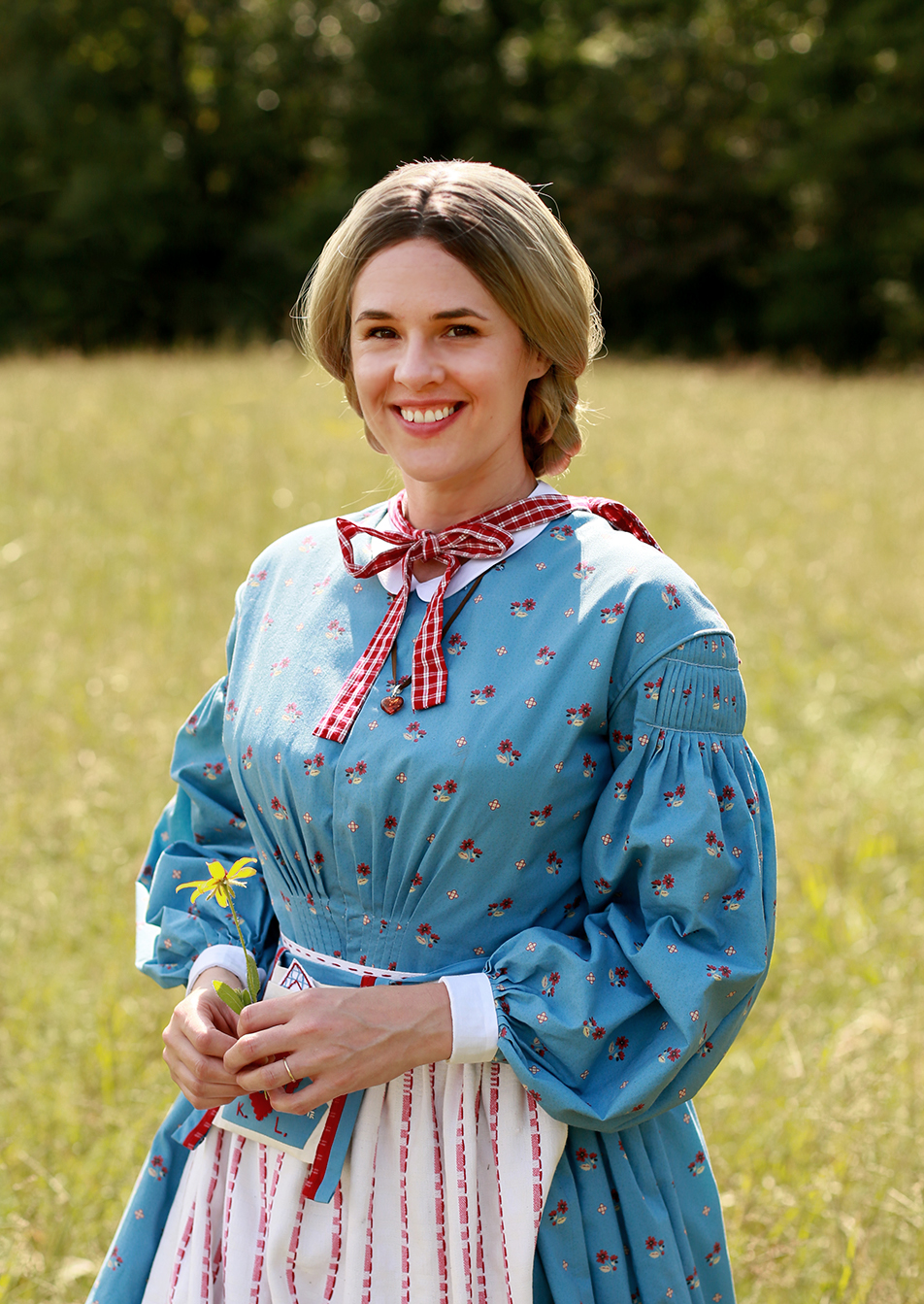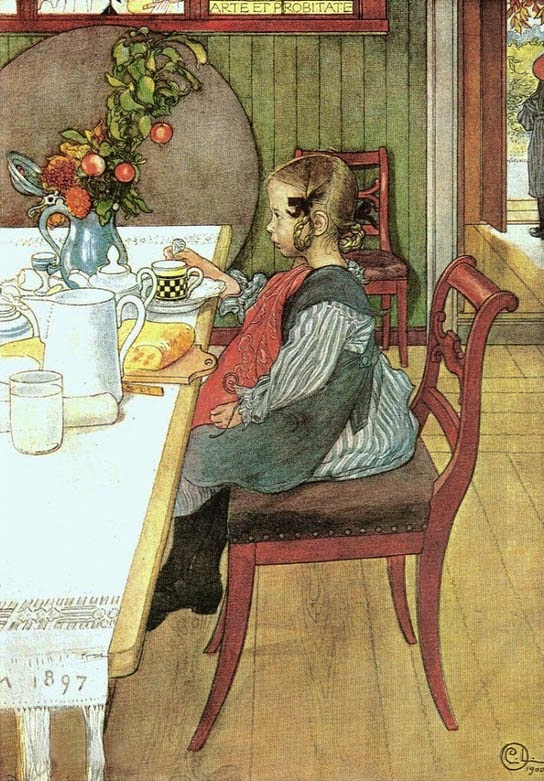The Kirsten Project | Tiered Skirts of the 1850s
/Fashion Plates from Top Left to Right: Le Bon Ton 1856, Les Parisienne 1859, Journal des Demoiselles 1854, Le Bon Ton 1856
In planning the style of dress to make with this edition of the Kirsten Project, I knew I wanted to do more than the standard drop shoulder, high neck, full skirt and sleeve cotton day dress (like you saw in my Meet Kirsten costume). In my introduction to Kirsten’s springtime look, I explained my thoughts regarding a pioneer girl and the size of her wardrobe. In short, I don’t think a prairie girl would have a special dress for every season of the year, and it would have been unlikely that she’d have a dedicated frock for her birthday. Women of the day usually didn’t even have a special wedding dress and were married in whatever was their finest. (Here are some photos of women in my family doing just that on their wedding days in 1880 and 1901.)
With all of this in mind, I’ve designed a costume that celebrates the fashion of the 1850s - specifically full tiered skirts as you can see above and below. I love that so many of the plates I found featured pink dresses, even pink gingham, which further emphasizes how on point the designers at Pleasant Company were when they landed on this fabric for Kirsten. You can see more about gingham through modern fashion history HERE.
Click below to check out more fashion plates I used as inspiration below or see my previous springtime inspiration posts, including Girls’ Dresses of the Mid 19th Century and Think Pink in the Mid 19th Century.

